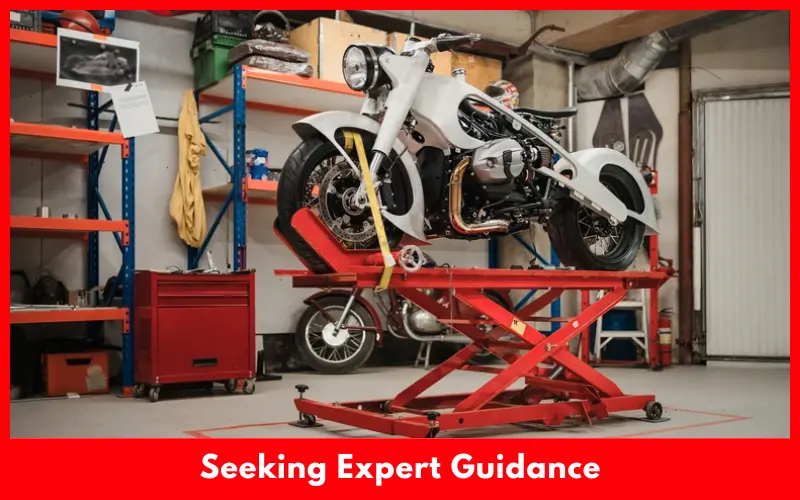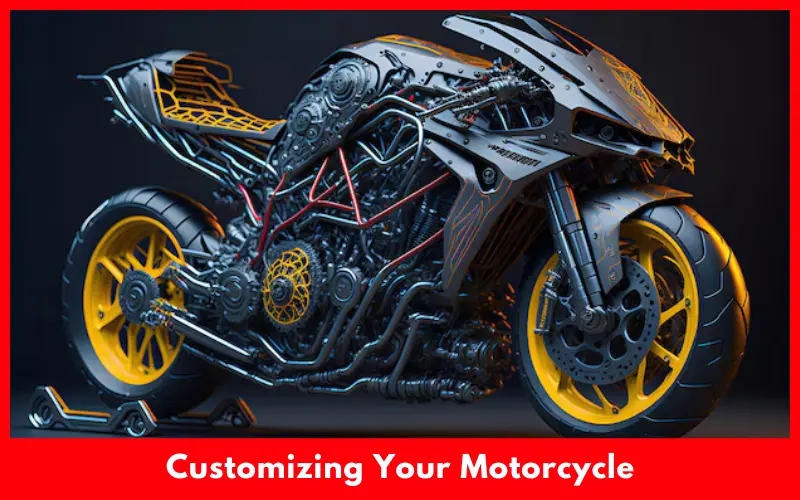Among motorcycle enthusiasts, the exhilaration of cruising highways on a machine that represents who they are – not just driving, but being driven – is frequently difficult to improve upon. Motorcycle customisation provides riders with the opportunity to transform stock bikes into utterly individual realisations of one’s outlook on two-wheeled transportation: ergonomics, aesthetics, performance, you name it.
It could be a head-turning cafe racer to show off to your friends at the weekend, or a long-distance touring companion to take you around the world. Whatever your reason is for customising, here are the ‘do’s and don’t’s’ to keep in mind that will set you on a course towards a successful and safe custom biking life.
Article Summary
Planning Before Customizing Your Motorcycle
Befor customizing your motorcycle, first define your target. Do you want a bike with an amazing paint job that makes you the envy of your town? Do you want to build more power and rideable performance, or a cushy touring bike for long distances? Defining where you want to end up will dictate part selection to ensure that what you end up with meets your goals.
After you’ve set your goals, the next step is to budget – realistically – for the expense of labour. Customisation can be pricey, so do your research – including how much the parts you need will cost, what tools you need to buy, and particularly if you have to pay someone to do any of the work for you. Some modifications might also require altering other parts of your motorcycle, which can mean hidden costs you hadn’t bargained for.
Choosing the Right Base
If you’ve formulated a plan and have a budget, then the next step is to purchase the motorcycle that will serve as your canvas from which to create your masterpiece. This is precisely where an inexperienced customiser could be prone to overreach.
Namely, by committing to building a motorcycle from the ground up, a process known as ‘making’ the bike. Making a bike (as opposed to building it up) is no easy task and should be attempted only by seasoned mechanics or customisers.
For just about everyone ever, the best way to do that is to start with a stock motorcycle, choosing one that has the potential to be what you want it to be. You obviously want to pick your starting point with care, considering things such as engine size, frame type/style, and what’s already on it (ie, a complete fly-by-night bastardised moron custom chopper).
For instance, if your cafe racer inclination is to do a rocketing, high-performance, from-the-factory sport bike, grab yourself one of those, not a cruiser or anything that’s already large and long and lumbering. A sport bike has challenge built right into the design.
Safety First
While the fun of modification should not be sidelined, safety can never be compromised: your motorcycle is mechanical and fast – any modifications must always take your safety and that of others on the road into account.
Therefore, safety-critical areas such as tyres, brakes and suspension must be given the highest possible priority, you should use the best components you can afford from the most reputable manufacturers, and all modifications should be in accordance with local regulations.
Function Over Form
Sure, aesthetics are important – especially as an expression of self and a demonstration to others – but your motorbike is also a machine with real, practical purposes. Before you start jumping in headfirst with the XJR1300 new-you bobber fork upgrade kit, pay close attention to whether it will compromise handling, ride comfort or practicality.
Lowering the suspension might look cool but scrape on pockmarked pavement and upset cornering dynamics. Installing a fancy exhaust might sound cool but sacrifice fuel economy.
It’s all about balance between form and function. Upgrades you make should improve your riding experience. Ergonomics are a great place to start. Will new clip-ons or an altered saddle improve the way your body feels during time in the saddle? Really check out how your parts will influence your motorcycle’s performance and handling before you buy.
Seeking Expert Guidance
Customising a motorcycle from scratch can be a daunting task, especially for newcomers. Take time to ask around if you are unsure. People who have more experience customising motorcycles in groups or at events can be a big help in saving time, money and frustration.
Mechanics and customisers should be able to help you out by giving you tips on part selection, compatibility and potential problems or obstacles you might run into as you progress with your build.

Installation is the other key area that professional mechanics can help with; getting these things clamped on securely is important, not just because you don’t want a loose bar-end mirror-ball falling off your bike, but also because ill-fitting or badly secured parts can compromise your handling and even put you in danger.
The most serious modifications you can do to a motorcycle involve the engine or electrical systems – modifications for which it is highly recommended that you leave it to the professionals.
The Pitfalls to Avoid
With the ‘do’s’ out of the way, let’s return to the ‘do not’s’. Of all the things that can spin your motorcycle build into a downward spiral, the biggest black hole is your budget and the tremendous pull that unexpected costs will have on it as well as that impulsive part grab you just can’t shake.
Plan ahead, be ruthless, and stick by it – including avoiding parts that won’t serve your end goal. Even modest upgrades – carefully planned and executed – will improve your experience through a fun motorcycle that looks and rides better than it did before you started.
Once again, one of the first things that should take precedence after getting your customisation is actually being safe. Don’t put form over function. A motorcycle accident lawyer from Tampa warns: Putting form over function might cause a potential collision so focus more on your safety instead.
Avoiding Extremes
Even though it’s an expression of individual creativity, you don’t want to steer too far out of respect for the bike’s original style and purpose. A touring bike converted to cafe racer might seem strange with too much bodywork, riding ergonomics that are still too enthusiastically racing-focused for the streets, and so on. Likewise, a cruiser done for drag-racing might end up losing the comfort and long-distance nature of its kind.
Look for changes that enhance the bike’s original aesthetic. Research classics in your chosen style (see examples in cafe racer, chopper, bobber and beyond) and let them inspire you. Your goal is to end up with a true custom motorcycle that’s faithful to its roots.
Knowing Your Limits
Many bikers proudly like to be able to do maintenance work and upgrades to their own bikes. Of course, we all know what we’re actually capable and not capable of, and the ability level varies from person to person where DIY motorcycle maintenance is concerned.
Some changes itself are, with the help of a mechanic who has the right tools, doable. Installing a new exhaust system or extra handlebars might be somewhat challenging, but still a task that you can do with a bit of help from the manual and some tools.
But complicated alterations to the engine or electrical system, suspension and other parts require professional assistance as they can cause damage to your motorcycle, affect its performance and, most importantly, lead to serious safety issues. Get your mechanic involved for more complicated tasks. It will ensure your modifications are done correctly and your motorcycle remains safe to ride.
Conclusion
Embrace the fact that you can always ask advice from auto mechanics and other customisers, and that good old-fashioned elbow grease (safely done!) is still a good thing.
But in any case, you’re embarking on a valuable road trip to create the motorcycle that’s uniquely your own – a machine that will give you years of personalised riding fun.
With a little advance planning, safe execution and a lot of imagination, you too could turn that showroom racer into that winning road companion.

